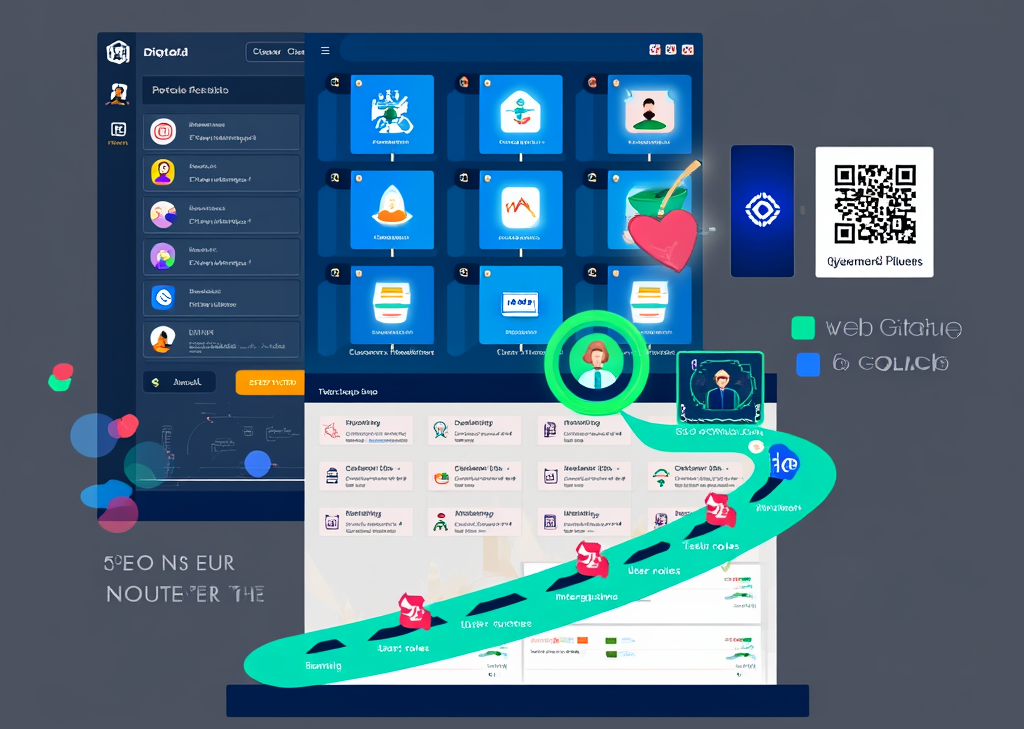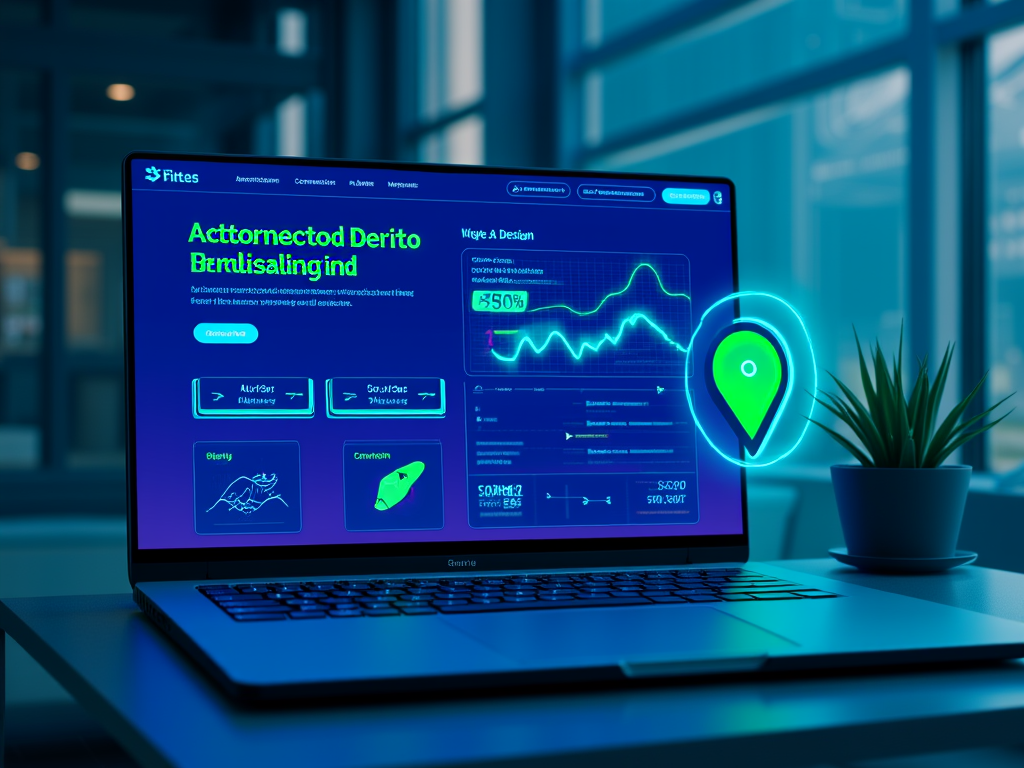Portal websites: what you need to know before launching
Introduction
Portal websites are not just the newest trend in the digital landscape; they are the backbone of modern interaction. Imagine standing at a bustling intersection, where a multitude of paths branch out before you, each leading to unique destinations. A portal website is that intersection—an interactive platform that consolidates a myriad of resources, tools, and services into one cohesive user experience. Whether you’re operating in business, education, healthcare, or community engagement, these portals provide tailored, streamlined access that perfectly aligns with today’s fast-paced digital world.
What is a portal website?
In its essence, a portal website is a specialized digital gateway that offers much more than a traditional site. Think of it as a multifunctional hub, designed for distinct user groups—clients, employees, students, or members of a community—giving them personalized access to content and tools relevant to their needs. What sets a portal apart?
- Personalization: Every user finds a unique interface tailored just for them, leading to a more engaging experience.
- Consolidated Access: A single sign-on provides entry to multiple resources and services, rather than users juggling several different accounts.
- Interactivity: Features may include file uploads, collaborative spaces, real-time notifications, and much more.
Consider a student portal at a university. It’s not just a website; it's a vibrant space where a student can register for classes, check grades, communicate with professors, and access course materials—all through an intuitive, user-friendly design.
Key features and benefits of portal websites
When diving into portal design, certain features become non-negotiable for crafting an effective user experience:
-
Unified User Interface: Consistency across different sections minimizes confusion and enhances ease of navigation. Imagine walking through a well-organized library instead of navigating through a maze.
-
Role-Based Access: Different users require different levels of access. An employee might need HR tools, while a customer might want access to order history. Tailoring visibility reinforces security and relevance.
-
Self-Service Functionality: Equip users with tools that allow them to manage their experience rather than needing to rely on support teams. From booking appointments to downloading invoices, self-service is key.
-
Customization & Branding: Building a portal that reflects your brand strengthens identity, encouraging user loyalty. The colors, logos, and layout become not just visuals, but feelings of belonging.
-
Integration Capabilities: The portal must be able to connect effortlessly with existing systems—be it ERP, CRM, or various databases, creating a seamless flow of information.
-
Mobile and Multi-Device Access: With so many accessing services on the go, it’s essential for your portal to be responsive; it should function smoothly across smartphones, tablets, and desktops.
These features translate into real-world benefits such as improved efficiency, enhanced user satisfaction, and a noticeable reduction in administrative overhead.
Types of portal websites and their use cases
Before launching your portal, you’ll want to define its purpose, which often correlates with the type of portal you wish to create. Let’s break down some standard categories:
-
Customer Portals: Ideal for creating a direct communication line with customers, providing services like account management, order tracking, or rewards management. Think of how Beekeeper’s Naturals encourages their customers through easy subscription management and engaging reward systems.
-
Employee Portals: A digital workspace where employees can access HR resources, project collaborations, policy documents, and more. Safety and ease of use can greatly enhance productivity.
-
Partner Portals: Facilitating business partnerships by providing vendors or suppliers with necessary tools, this type typically combines procurement processes with real-time updates—think of how Kawasaki streamlined their communications with their suppliers through a dedicated portal.
-
Educational Portals: Platforms tailored for students and faculty that centralize courses, grading systems, scheduling, and academic resources. Stanford's education portal stands out, integrating every academic necessity into a clean interface.
-
Healthcare Portals: Digital interfaces that allow patients to manage appointments, view lab results, and pay bills with ease. The Massachusetts General Hospital Portal exemplifies this by simplifying interactions for patients.
-
Government Portals: These aggregate various public services into a centralized platform to streamline processes, like applying for grants. Grants.gov is an illustrative example of how technology can simplify government interactions.
These varying portal types shed light on the incredible versatility portals provide, allowing organizations to cater to unique needs and strategies.
Planning and launching your portal website
A successful portal launch involves meticulous planning. Here’s a structured approach you should consider:
-
Identify Your Portal Type and Audience: Define whether your portal will cater to a broad service spectrum or focus on niche markets, such as hobbyists or professional communities.
-
Define Portal Features: Decide what functionalities will be indispensable for your users. What tools do they require? Whether it’s forums, news updates, or shopping features, clarity is key.
-
Personalization and Customization: Map out how users will tailor their experiences, from flexible dashboards to content that can be rearranged based on user preferences.
-
Integration with Existing Systems: Assure that data can flow freely between your portal and internal systems to create a cohesive user experience.
-
Design for Usability and Accessibility: Strive for designs that are clean and intuitive, ensuring they are also accessible to those with disabilities.
-
Security and Authentication: Implement robust identity management protocols to safeguard sensitive information. No one wants to breach that trusted connection.
-
Testing and Iteration: Prioritize extensive testing with potential users and create feedback loops to enhance designs before launch.
-
Launch and Monitor: Post-launch, leverage analytics to track engagement metrics, continually assessing and evolving your portal based on user interactions.
Real-world examples to inspire your portal design
Gaining inspiration from existing, successful portals can illuminate your design and strategy:
| Portal Type | Example | Key Features/Benefits |
|---|---|---|
| Education | Stanford University | Central resources, enrollment, advising |
| Healthcare | Massachusetts General Hospital | Easy access to medical records, scheduling |
| Customer | Beekeeper’s Naturals | Subscription management, rewards systems |
| Partner/Vendor | Hewlett-Packard Enterprise (HPE) | Consolidated partner tools and resource access |
| Government | Grants.gov | Simplified public grant application and management |
These cases epitomize how thoughtful design and robust functionality can translate into heightened user engagement, addressing specific needs effortlessly.
In this rapidly evolving digital era, understanding the deep layers of initiating a portal website will place you ahead of the game. Think of the potential to reshape user experiences and explore new horizons of connection and interaction. Continue dreaming big, for your portal journey is just beginning.
FINDDOMAIN.GE (Internet services LLC) is a very interesting and rapidly developing IT company. The main directions are: web development, domain and web hosting. It also offers clients sub-services and outsourcing related to the main services.
BEST OFFERS:
Do you want to create your own company website or create your own online business on the Internet?
– WEB HOSTING
– DOMAIN REGISTRATION
– WEB DEVELOPMENT
– SITE BUILDER



Challenges and Considerations for Portal Websites
As exciting as the journey of launching a portal website can be, it’s vital to navigate the obstacles that may arise. Creating a seamless user experience is not merely about integrating features; it’s about addressing potential pitfalls that could derail user engagement.
1. User Adoption and Engagement
Engaging users is the lifeblood of your portal. Many projects fall short due to a lack of ongoing user engagement. After all, what good is a well-designed portal if no one uses it? To encourage adoption, consider these elements:
-
Onboarding Processes: Create intuitive onboarding experiences that guide users through features and functionalities, making them comfortable navigating the platform.
-
Feedback Mechanisms: Implement surveys or feedback forms to capture user insights and understand their needs. This ongoing dialogue helps improve their experience over time.
-
Gamification Elements: Incorporate elements like badges, rewards, or leaderboards to make the portal more intriguing and engaging. As with Beekeeper’s Naturals, well-implemented gamification can boost user loyalty tremendously.
2. Technical Challenges
Technology can be a double-edged sword. It unlocks countless opportunities but can also introduce complexity. Stay ahead by keeping these considerations in mind:
-
Scalability: As your user base grows, your portal should easily accommodate increased traffic and data storage. Ensure your architecture is designed for growth, preventing bottlenecks.
-
Performance Monitoring: Regularly monitor server response times, uptime, and performance analytics to identify potential network slowdowns before they impact users.
-
Security Risks: Cybersecurity threats can endanger sensitive user information. Always prioritize robust security measures—such as two-factor authentication and data encryption—to reassure your users their information is in safe hands.
3. Content Management
Effective content management is essential. Your portal is likely to contain dynamic content that requires constant updates. Consider employing these strategies:
-
Content Management Systems (CMS): Choose a user-friendly CMS that allows non-technical staff to easily update and manage content.
-
Regular Updates: Schedule content audits to ensure that all information remains current and relevant. Outdated content can significantly detract from a portal’s perceived reliability.
-
Engaging Multimedia: Diversify content formats with videos, infographics, and podcasts to attract different user preferences while continually informing them.
Enhancing User Experience Through Analytics
Leveraging analytics is fundamental in understanding how users interact with your portal. Tracking behavior provides insights to fine-tune features and optimize interactions. Key metrics to consider include:
-
User Flow Analysis: Inspect how users navigate your portal, identifying areas where they might struggle or exit unexpectedly. Use tools like Google Analytics or Hotjar to visualize this flow.
-
Engagement Metrics: Assess how frequently users return, which features they use most, and how much time they spend in the portal. Understanding these patterns will allow for data-driven decisions regarding future enhancements.
-
A/B Testing: Regularly conduct A/B tests on various layouts, features, or content to systematically gauge user preferences and optimize your portal design accordingly.
Future Trends in Portal Websites
To keep your portal relevant, adapting to emerging trends is crucial. Let’s explore several trends that will shape the future of portal websites:
1. Artificial Intelligence and Chatbots
Integrating AI-driven chatbots can promote engagement and enhance efficiency. These digital assistants can handle common inquiries, guide users, and collect feedback round the clock, providing immediate support that keeps users returning.
2. Integration with IoT Devices
As the Internet of Things (IoT) expands, portals can integrate with smart devices to personalize user experiences even further. Imagine accessing your healthcare portal and simultaneously receiving personalized health tips based on data from your wearable device.
3. Enhanced Collaboration Tools
As remote work becomes standard, portals need to incorporate collaborative features such as shared workspaces, video conferencing, and discussion forums. This functionality will position portals as essential tools for teams and communities.
Conclusion
Launching a portal website may seem like a daunting endeavor, but with meticulous planning, awareness of user needs, and a grasp of technical nuances, it can become a dynamic, indispensable part of any organization. Thoroughly understanding your audience, evolving with technology, and continuously refining the user experience will not only ensure user satisfaction but foster lasting relationships. In this digital age, your portal can be the powerful nexus that connects, engages, and retains users, transforming their experience into one that they instinctively depend upon.
Embrace the journey, and let your portal serve as a beacon of connection and collaboration in an ever-evolving world.
Related Videos
- Creating Effective Portal Websites
- User Engagement Strategies for Portal Websites
- Leveraging Analytics for Portal Improvement
References
- Portal Website Overview
- Key Features of Portals
- Challenges in Portal Launches
- Trends in Portal Technology
BEST OFFERS:
Do you want to create your own company website or create your own online business on the Internet?
– WEB HOSTING
– DOMAIN REGISTRATION
– WEB DEVELOPMENT
– SITE BUILDER





![Website Hosting Providers in [Local Area]: What to Choose](https://besthosting.ge/wp-content/uploads/2025/08/website-hosting-providers-in-local-area-what-to-choose.jpg)
![WordPress Website Experts in [Your City]](https://besthosting.ge/wp-content/uploads/2025/08/wordpress-website-experts-in-your-city.jpg)

![Web Development Services in [Local Area] for E-commerce](https://besthosting.ge/wp-content/uploads/2025/08/web-development-services-ecommerce-local-area.jpg)